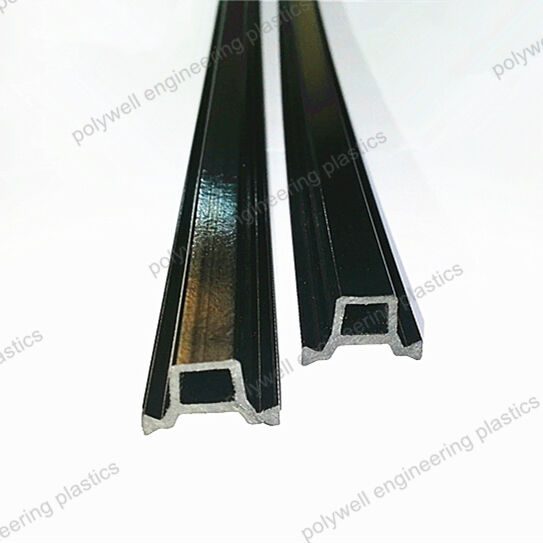
Thermal break strips have received a lot of traction as part of modern energy-efficient building designs, as the construction industry works towards more sustainable options. Made of PA66 GF25, POLYWELL thermal break strips do a good job at reducing thermal bridging while also improving overall energy efficiency. When such sleek strips are added into the architecture plans, construction design thermals, and control of moisture as well as comfort of the occupants gets better.
Thermal bridging can be defined as the transfer of heat through building materials which allows energy pathways within structures, and is particularly common in buildings with aluminum frames. This is because aluminum frames, though very strong and easily fabricated, are quite conductive. POLYWELL thermal break strips act to prevent this thermal transfer and provide a separation between the aluminum frame and the interior space. This leads to better insulation of windows and doors, which means saving of heating and cooling systems and therefore energy bills for the occupants.
In addition to their core role in thermal performance enhancement, POLYWELL thermal break strips also assist in moisture control. Where warm air comes in contact with cold surfaces, there are cases of condensation which can harbor microorganisms like mold and degrade building materials. POLYWELL thermal break strips control condensation formation by controlling surface temperatures, which results in a better indoor environment. This plant is particularly important in areas of high moisture or where temperatures change drastically. It can assist with controlling moisture.
The sound insulation properties of POLYWELL thermal break strips considerably increase their use in modern building construction. Soaring levels of noise generated from the cities can compromise the wellbeing of the people that reside in those areas. Such thermal breaks add an effective barrier to external noise allowing for a more peaceful and enjoyable home. Noise is one of the major concerns of people living in residential buildings because it directly affects their interest.
Perhaps the primary edge POLYWELL thermal break strips have over other thermal break strips is their versatility. A thermal break strip can be fitted into an aluminum, a wood or even a pvc frame. This aspect enables designers and constructors to apply thermal break strips to different construction projects without affecting their outlook or intended designs. Whether making high-rise or low-rise buildings, POLYWELL thermal break strips have a large number of applications.
Integrating thermal break strips made from Polywell materials into architectural designs promotes and encourages construction maintenance standards. Construction sustainability has been slowly rising up as a key concern in the construction industry which is also promoted by the use of POLYWELL thermal break strips. These strips play a role in achieving construction targets whilst effecting a much lower carbon footprint of the projects. Not only does this enhance the environment, it is also beneficial to market demand as consumers tend to prefer energy efficient homes and buildings.
Another positive aspect is a simple installation process of POLYWELL thermal break strips. POLYWELL thermal breaks were intended to relieve and fit neatly into a construction, therefore, their installation can be pretty fast and efficient, thus saving time and labor costs. This effectiveness prevents construction from dragging on for too long and builders get to concentrate on delivering their designs.
The POLYWELL thermal break strips have very high durability which is quintessential for such products as they are exposed to lots of harsh environmental elements such as moisture, UV rays, and extreme temperatures. These strips are beneficial to the property owners and occupants as their thermal performance will still be useful after a substantial amount of time.
To summarize, the POLYWELL thermal break strips can be referred to enabling elements in energy-efficient buildings design. They are able to reduce thermal bridging, moisture, and improve sound insulation, hence these strips are integrated into the construction to enable energy efficiency in modern buildings. Due to their versatility and durability, POLYWELL thermal break strips offer a good and practical solution for architects and builders who are building high-quality energy performance buildings Because nowadays the focus in construction is on the environmental issue. As the time changes and technology evolves POLYWELL thermal break strips will play an essential role in accommodating energy efficiency into building design.